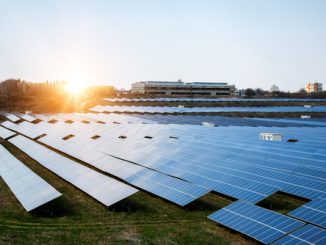
The performance of solar plants is a function of multiple components such as panels, inverters and transformers. These devices are subject to malfunctions and failure due to environmental and systemic factors. In order to effectively and timely manage inefficiencies in the solar power system, remote solar monitoring systems are being deployed. They help improve operational efficiencies, reduce site visits, optimise the power generation output, provide easy access to multiple sites and generate real-time data for monitoring and analysis. Estimates by Fourth Partner Energy suggest that remote monitoring systems save 15-25 per cent of annual operations and maintenance costs in a solar project. Monitoring is not only effective in increasing profitability through improved power output but also increasing the asset lifetime and site uptime. Increasing government incentives and regulations are encouraging industrial and residential consumers to deploy solar energy solutions. To maintain the profitability of these plants, predictive analytic algorithms and remote monitoring solutions provided by third-party experts are being deployed. In recent years, several third-party applications have entered the remote monitoring market with solutions like EIRA.io, which collect and transmit data in a matter of seconds.
Market trends and overview
A recent report by Allied Market Research (AMR) titled “Smart Solar Power Market” has estimated the value of the global smart solar market at $13.4 billion in 2021. During 2022-31, the smart solar power industry is expected to grow at a compound annual growth rate of 13.6 per cent, reaching $47.7 billion in value by 2031.
Real-time monitoring and communication is an integral part of smart solar power systems, which employ automation and internet of things (IoT) to produce more efficient energy outcomes from solar panels. Investments in these smart systems have been rising, especially post the Covid pandemic, due to the increasing deployment of solar panels across commercial, industrial and residential applications as well as reduction in solar PV costs. Moreover, the government has laid out renewable purchase obligations and regulations that are driving companies to move away from conventional power generation through fossil fuels towards cleaner green sources such as solar power. A major driving factor has been the ambitious clean energy targets that countries, including India, have set to cut down carbon emissions.
The report by AMR distinguishes the global smart solar power market on the basis of devices, solutions and applications used as well as their region. Devices in this market include smart solar meters, intelligent grid and RFID. Smart solar meters entail monitoring of solar plants including real-time alerts, which are sent to plant owners in order to address the potential failures and optimise the return on investment. Solar meters are widely used across commercial, industrial and residential applications, given their long-term stability, low costs, wide spectral range and real-time automated transmission capabilities.
Challenges and outlook
The smart solar systems market powered by artificial intelligence (AI), automation and IoT holds immense promise. However, the sector is not short of challenges. Many solar projects use supervisory control and data acquisition (SCADA) data for remote monitoring and control. The sensor data received from SCADA is often limited and does not take into account the anomalies, which frequently cause failure in the system. The real reason for failure often goes undetected, despite a monitoring system in place, leaving little time for any corrective action to be undertaken.
Many solar projects are located in remote regions with poor internet connectivity, which makes remote monitoring more challenging with delays in data collection and transmission. Furthermore, round-the-clock projects are gaining traction due to the intermittent nature of renewable sources like solar and wind. These projects are often monitored and controlled by multiple systems, creating problems of coordination and data assimilation. Besides, monitoring systems can be beneficial in predictive maintenance, but they are primarily diagnostic in nature and do not have the capacity to fix the problem on ground.
Over the past decade, both developed and developing countries have embarked on the path towards non-fossil fuel-based energy generation with an emphasis on solar power. The aim is to reduce emissions and reduce their dependence on fossil fuel imports. The recent Russia-Ukraine crisis has reiterated the importance of this transition. Increasing population, lower tariffs and corporate environmental obligations are expected to further drive this market. The growth of the solar market will in turn drive the growth of IoT- and AI-based smart solar power systems, which are critical for ensuring the effectiveness and maintaining the competitiveness of solar plants over the coming years.
By Kasvi Singh



